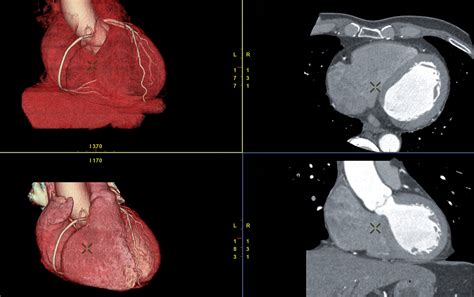Understanding Angiograms and their Costs
An angiogram is a medical procedure that involves the use of X-rays and a special dye to check the blood vessels in your body. It is used to detect problems such as blockages, narrowed arteries, or aneurysms in the heart, brain, lungs, or other parts of the body. An angiogram is a useful tool for doctors to diagnose and treat certain medical conditions, especially those affecting the cardiovascular system.
The cost of an angiogram without insurance can be steep, and it varies depending on several factors, such as the location, the facility, the type of angiogram, and the urgency of the procedure. In the United States, the average cost of an angiogram ranges from $5,000 to $10,000, with some hospitals charging as much as $30,000 or more for a complex angiogram procedure.
The cost of an angiogram is composed of several components, including the doctor's fee, the facility fee, and the ancillary services fee. The doctor's fee covers the cost of the physician's time, expertise, and training. The facility fee covers the cost of the equipment, supplies, and overhead expenses of the hospital or clinic where the procedure is performed. The ancillary services fee covers the cost of additional services such as laboratory tests, nursing care, anesthesia, sedation, and follow-up consultations.
The type of angiogram also affects its cost. There are various types of angiograms, such as coronary angiography, cerebral angiography, pulmonary angiography, and peripheral angiography, among others. Each type varies in terms of complexity, duration, and resources required, which ultimately affect the total cost of the procedure. Generally, a coronary angiogram, which is a common type of angiogram that detects blockages in the arteries supplying blood to the heart, is more expensive than other types of angiograms.
The urgency of the procedure is another factor that determines the cost of an angiogram. Emergency angiograms, which are performed to diagnose and treat life-threatening conditions such as heart attacks or strokes, are typically more expensive than elective or routine angiograms, which are done to evaluate a known or suspected condition. Emergency angiograms require immediate attention and often involve additional resources, such as a medical team on standby, which can drive up the cost.
Overall, an angiogram is a valuable diagnostic tool that can help doctors identify and treat medical problems that would otherwise go undetected. However, the cost of the procedure can be a barrier for many patients who do not have insurance or cannot afford the out-of-pocket expenses. It is essential for patients to discuss the costs and risks of an angiogram with their doctor and to explore all available options for paying for the procedure, such as financial assistance programs or payment plans.
Variations in Angiogram Costs
Angiogram is a medical imaging test used to examine blood vessels in the heart and other parts of the body. It is used to look for blockages, malformations, and other issues related to the blood vessels. Depending on the location, complexity of the procedure and the facility, the cost of angiogram may vary widely.
The cost of angiogram in the United States ranges from $1,000 to $10,000 or more without insurance. The cost of angiogram depends on several factors, including the location of the procedure, the complexity of the procedure, the hospital or medical center where the procedure is performed, the type of anesthesia used, and the number of images needed.
In general, the cost of angiogram is highest in urban areas and higher-end hospitals. For example, an angiogram performed at a top-tier medical center in New York City might cost twice as much as the same procedure performed at a mid-tier hospital in a smaller town. As with most medical procedures, the cost of an angiogram is also higher in areas with a higher cost of living.
Another factor affecting the cost of angiogram is the patient's health insurance status. Patients without insurance coverage will usually pay the full cost of the procedure out of pocket, while those with insurance will typically pay a smaller portion of the total cost, with the remainder being covered by their insurance plan.
For patients without insurance, there are a few options for financing the cost of an angiogram. Some medical centers offer payment plans or financing options, allowing patients to make regular payments until the balance is paid off. Others may offer discounts for patients paying out of pocket.
In addition to location and insurance status, there are other factors that can affect the cost of angiogram. For instance, some angiograms may require additional diagnostic procedures, such as an echocardiogram or stress test, which can add to the overall cost. Similarly, the type of equipment used in the procedure may affect the cost, with newer or more advanced machines typically being more expensive to use than older or less advanced models.
Overall, the cost of angiogram without insurance can vary widely depending on a number of factors. Patients who are concerned about the cost of the procedure should talk to their healthcare provider about options for financing or obtaining discounts.
Dangers and Risks of Not Having Insurance
Going without health insurance can be a gamble that could end up costing you far more than you bargained for. Neglecting to have health insurance could lead to a financial burden that can be difficult to handle. Immediate costs of medical procedures, such as angiograms, can range from a few hundred to tens of thousands of dollars without insurance. However, the financial impact of not having insurance coverage doesn't stop there - it also means that you're likely to pay more for preventative care and medication than if you were insured.
One of the greatest risks of not having insurance is that you may avoid seeking medical attention for issues that require attention, such as chest pain or shortness of breath, which could have serious underlying health conditions that need immediate attention.
Many uninsured people also tend not to participate in preventative care programs, including cardiovascular risk assessments and early detection of diseases, which can ultimately save lives. With a lack of health coverage, it is often unaffordable or impossible to pay for doctor visits or routine check-ups.
A significant risk of not having insurance coverage is that it is not always possible to anticipate medical emergencies or the severity of a newfound health problem. Without insurance, the cost of medical emergencies can be beyond what most families can afford. It can lead to bills that could take years to pay off, and in some cases, may result in financial bankruptcy.
The decision to go without health insurance coverage can also have long term effects on your financial standing ruining your credit score and impacting your ability to secure financing in the future. Many medical providers hire collection agencies to pursue unpaid debts. This can negatively impact your credit score, making it difficult to purchase a car, a home, or get loans in the future. Once your credit score has been negatively impacted, it can take years to recover, which could cause many more problems.
Being uninsured can put extra financial stress on carefully planned retirement funds, often resulting in the need to work longer periods or having lesser money available during retirement. A medical emergency that leads to having a significant medical debt that needs to be paid off could mean you have to tap into funds that were meant to be the safety net during retirement.
Therefore, it is essential to invest in health insurance coverage keeping in mind not just the immediate benefits but the long term financial and health stability that it offers. Medical emergencies and issues can happen at any age. The key is to be protected and prepared with insurance coverage.
Paying for an Angiogram Without Insurance

An angiogram is an important diagnostic tool used to examine the blood vessels for any abnormalities. However, the cost of an angiogram without insurance can be overwhelming. If you plan to undergo an angiogram, it's essential to be aware of the different payment options to avoid accumulating a massive debt.
1. Relying on Government-Sponsored Programs
If you can prove that you're experiencing financial hardship, you may qualify for government-sponsored programs such as Medicare or Medicaid which can cover the cost of an angiogram. However, you need to meet their eligibility requirements and provide the necessary documentation to qualify for these programs.
2. Applying for Financial Assistance
If you don't qualify for government-sponsored programs, you can still apply for financial assistance directly from the hospital or clinic. Most healthcare facilities have financial assistance programs that can offer discounts or payment plans based on your income. To qualify, you will need to provide personal and financial information, including your tax returns or pay stubs.
3. Negotiating with the Healthcare Provider
If you'll be paying for the procedure out of pocket, don't be afraid to negotiate the price with the healthcare provider. Many hospitals and clinics are willing to work with patients who are paying cash and offer discounted rates if asked.
4. Seeking Low-Cost Alternatives

Another way to save on an angiogram is by reducing your overall healthcare costs, including doctor visits and prescription medications. Maintaining a healthy lifestyle with exercise and proper nutrition can also reduce the risk of developing heart disease and other conditions that require an angiogram. You can also consider alternative low-cost diagnostic tests such as an echocardiogram or a stress test that can provide similar results at a fraction of the cost.
In conclusion, paying for an angiogram without insurance can be daunting, but there are several options available. Whether you rely on government-funded programs, apply for financial assistance, negotiate with your healthcare provider, or seek low-cost alternatives, it's important to be proactive in managing your healthcare costs to avoid financial stress.
Navigating the Healthcare System for Affordable Angiograms

For people without health insurance, diagnostic procedures and treatment costs can be extremely expensive. Unfortunately, not everyone can afford the high cost of angiograms, a kind of test for assessing the blood vessels. The cost of angiogram without insurance can be as high as $10,000 or more. But there are some things you can do to navigate the healthcare system for affordable angiograms.
1. Negotiate with Your Doctor

Many people do not know that they can negotiate with their doctor regarding the cost of medical procedures. Some doctors may offer discounts to uninsured patients or accept payment plans. Before the procedure, discuss the cost of angiogram with your doctor and explore if you could be able to get a fee reduction.
2. Shop Around

It is essential to shop around when trying to save healthcare costs. The price for angiogram mainly depends on the hospital or medical facility. Visit different medical centers, clinics, and hospitals to get quotes from different providers. Compare prices to get the best deal.
3. Apply for Financial Assistance Programs

If you have a low income, you may qualify for medical financial assistance programs. Many hospitals offer financial assistance or charity care programs for patients who cannot pay for their medical bills. You may also apply for government subsidies or Medicaid.
4. Apply for Medical Loans and Credit Cards

If you are uninsured and do not qualify for financial assistance, medical loans and credit cards can help you pay for the cost of angiograms. Medical loans are typically low-interest loans designed for medical expenses, while credit cards offer a revolving line of credit with interest rates that vary.
5. Consider Medical Tourism

Medical tourism is a concept of traveling to another country to receive medical treatment at an affordable price. Many countries, such as India, Thailand, and Mexico, offer angiogram at a lower cost compared to the United States. However, you should be cautious when considering medical tourism and research thoroughly about the medical centers, providers, and their reputation.
In conclusion, there are different ways to navigate the healthcare system for affordable angiograms, and each option comes with its own advantages and disadvantages. Patients should explore all available options and choose the one that works best for their health and financial situation.